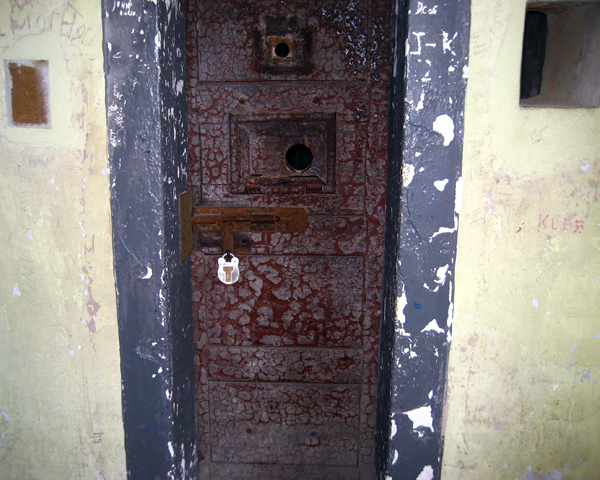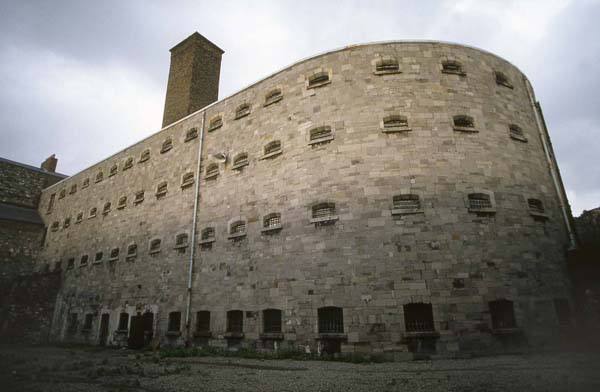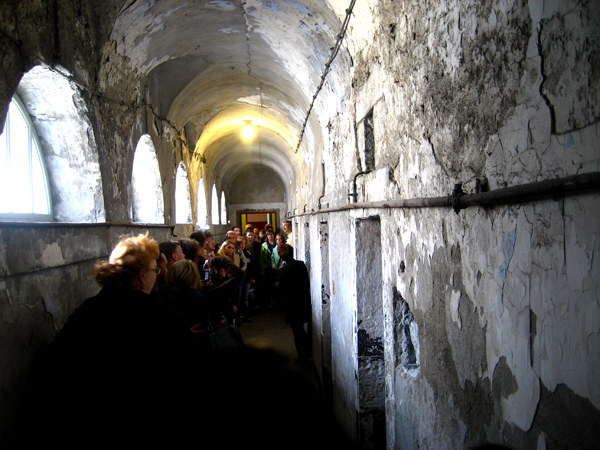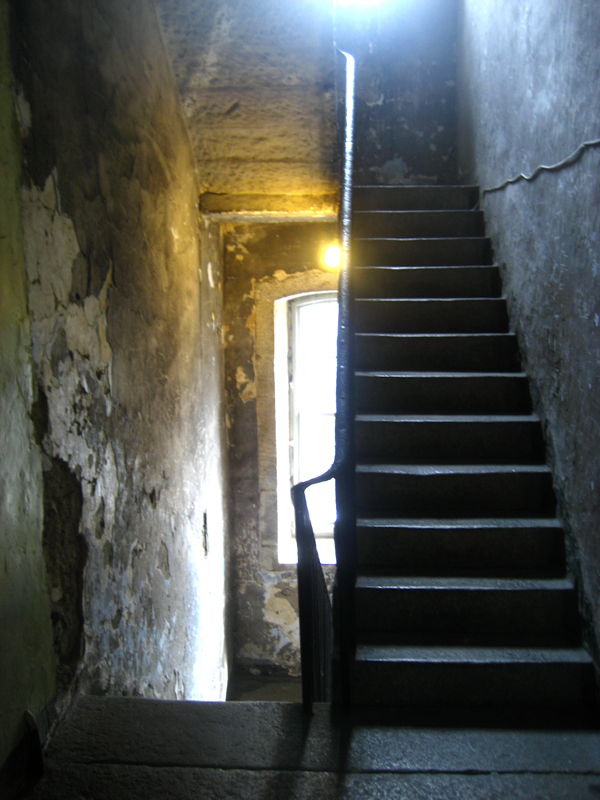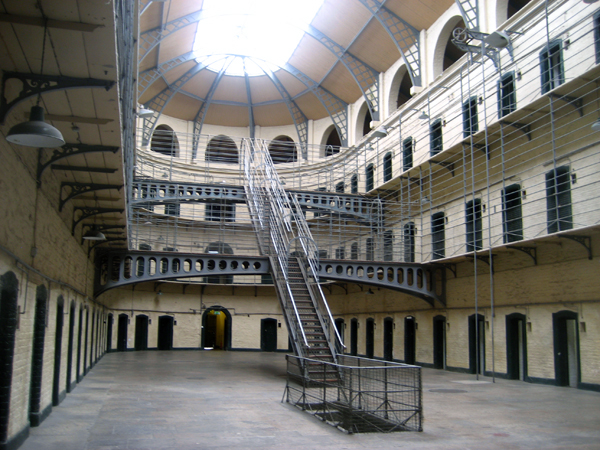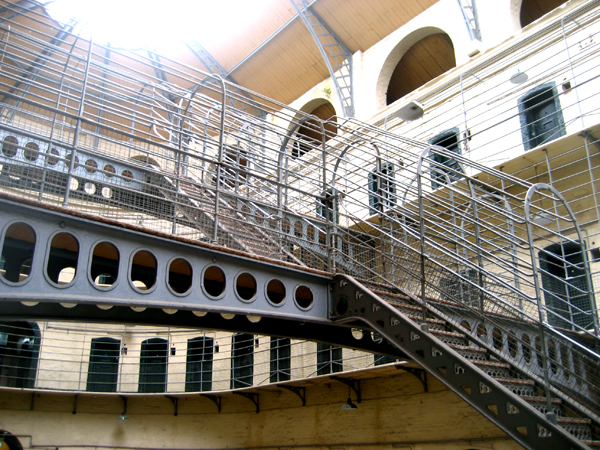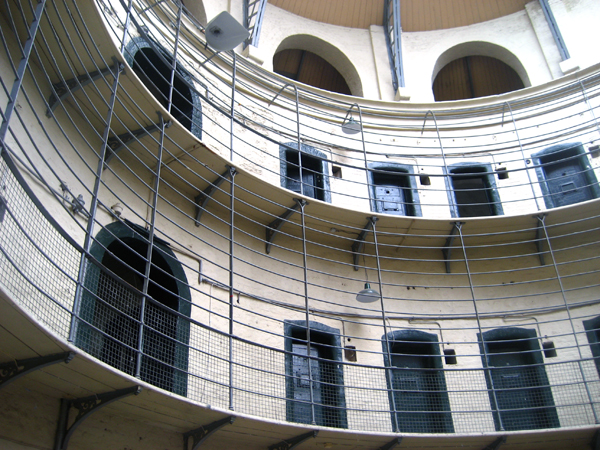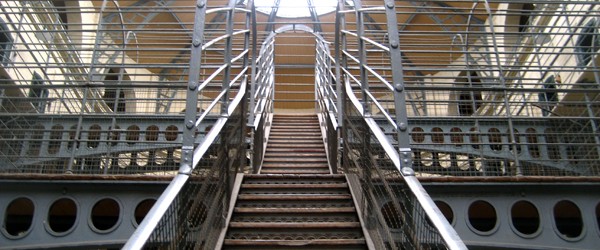
Architecture Abroad: The East Wing of Kilmainham Gaol
Culture, NostalgiaAugust 1847. Sitting in the same position for nearly two hours, the tingling numbness that accompanies sitting with bent knees for hours reminded her that she needed to move. But how could she? She was one of five prisoners crammed into a cell made for a single man.
With her was her youngest son, a twelve-year-old lad who, like his mother, had been thrown in prison for stealing a loaf of bread from the bakery cart. She tried to stretch her legs out but her cellmates, most of whom were drunk and reeked of their own fluids, were not interested in providing her relief. She took her chances and stood up. She wobbled toward the small window and just as she had feared, the sea of crammed prisoners expanded below her, leaving her with nothing more than the space beneath her worn-out soles to claim as her own.
This is how life went on for many women, children and men who were prisoners at the infamous Kilmainham Gaol (jail) in Dublin, Ireland that opened in 1796. A heavy influx of women and children prisoners was recorded during the famine of 1845-1850 – many were jailed alongside murderers and robbers for committing petty crimes like stealing bread and begging. No one really knows what killed the women and children prisoners, but it’s believed that most died from diseases brought forth from the unhygienic dungeon-like conditions.
As I walked through the numerous damp and cold corridors lined with jail cells, I could only imagine how many stories of injustice were exchanged behind the heavy iron doors. I tried to look past the eeriness that lingered in the empty chambers, and instead, focus on the interesting form-follows-function architecture, but I was too distracted, and to be honest, there was very little architectural detail to speak of until I arrived at the East Wing.
The East Wing (also referred to as the Victorian wing) was built as an addition to the jail in 1861 and was modeled after Jeremy Bentham’s ‘Panoptic Design’. The Panoptic design was described by Bentham as “a new mode of obtaining power of mind over mind, in a quantity hitherto without example”; in other words, for the first time ever, a guard on duty could have a perfect 270 0r 180 degree view of the space from a single position. In the case of Kilmainham, this position is located on the 3rd level of the East Wing. Bentham revolutionized surveillance-based design, and many other prisons followed Kilmainham’s suit and implemented a barrel-vaulted space with iron galleries and catwalks.
The grand staircase that runs through the centre of the East Wing is quite majestic – the architect clearly put some thought into aesthetics when drafting up this design. The numerous railings and decorative openings in the bridges are reminiscent of Victorian opulence, and yet still function to keep prisoners confined; actually, caged is a better term.
The East Wing provided an additional 96 cells and was specifically designed to keep inmates in solitary confinement in order to encourage self-reflection, contemplation and repentance. When compared to the dungeon-style of the original jail design, the East Wing had elevated Kilmainham to a “modern jail”. At first, the open-concept design of the main floor of the East Wing gives an impression of a light and airy space, but the single-occupancy cells were a mere 28 square metres.
The cells in the East Wing were designed to psychologically torture the inmates. There was a single window on the far wall that was very high up – too high for prisoners to look out of, but enough of an opening to provide ventilation and lighting. The large cell doors were made of metal and featured a single round peephole that could only be opened from the outside.
The guards would patrol the to make sure the inmates were not speaking to one another, and every once in a while, they would bang on the heavy metal doors to remind individual prisoners that someone was there, watching – and also to shock the prisoners and remind them to get back to their Bible study. The prisoners lived in constant fear – they could not hear or see the guards coming, and they had no visual clues about what was happening beyond the confines of their cells.
One of the more popularly visited cells is that of Grace Gifford, wife of rebellion leader Joseph Plunket. Gifford painted a lovely mural on her cell wall during her imprisonment that has been preserved to this day. Not only does this religious mural stand as a reminder of the many women who were unjustly imprisoned, but it also adds a welcomed dose of colour to the otherwise dismal plaster walls.
The East Wing has been used in numerous Hollywood films, including The Italian Job (1969) and In The Name of The Father (1993) and also made an appearance in U2’s music video, A Celebration, in 1982 because of its stunning staircase and spacious design; however, Hollywood glitz and glamour aside, Kilmainham still maintains a reputation amongst locals as one of the most feared prisons in all of Ireland all thanks to its revolutionary surveillance-based design.





